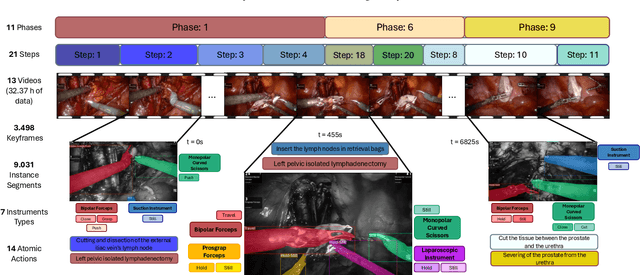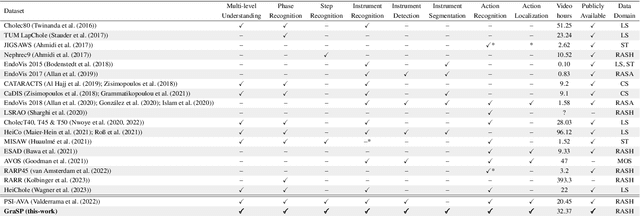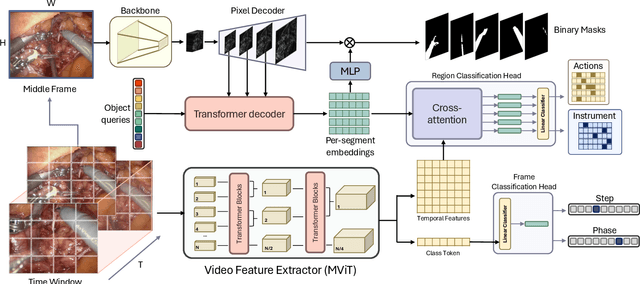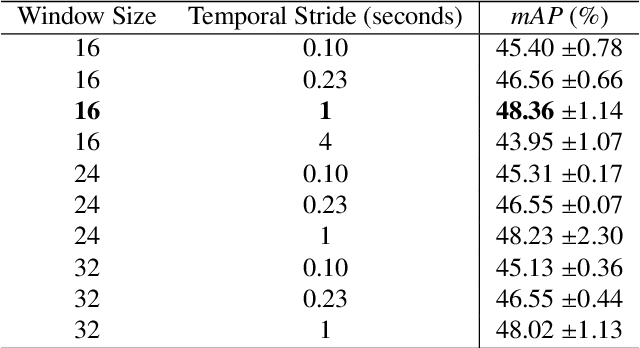Jessica Santander
Pixel-Wise Recognition for Holistic Surgical Scene Understanding
Jan 26, 2024



Abstract:This paper presents the Holistic and Multi-Granular Surgical Scene Understanding of Prostatectomies (GraSP) dataset, a curated benchmark that models surgical scene understanding as a hierarchy of complementary tasks with varying levels of granularity. Our approach enables a multi-level comprehension of surgical activities, encompassing long-term tasks such as surgical phases and steps recognition and short-term tasks including surgical instrument segmentation and atomic visual actions detection. To exploit our proposed benchmark, we introduce the Transformers for Actions, Phases, Steps, and Instrument Segmentation (TAPIS) model, a general architecture that combines a global video feature extractor with localized region proposals from an instrument segmentation model to tackle the multi-granularity of our benchmark. Through extensive experimentation, we demonstrate the impact of including segmentation annotations in short-term recognition tasks, highlight the varying granularity requirements of each task, and establish TAPIS's superiority over previously proposed baselines and conventional CNN-based models. Additionally, we validate the robustness of our method across multiple public benchmarks, confirming the reliability and applicability of our dataset. This work represents a significant step forward in Endoscopic Vision, offering a novel and comprehensive framework for future research towards a holistic understanding of surgical procedures.
Towards Holistic Surgical Scene Understanding
Dec 13, 2022Abstract:Most benchmarks for studying surgical interventions focus on a specific challenge instead of leveraging the intrinsic complementarity among different tasks. In this work, we present a new experimental framework towards holistic surgical scene understanding. First, we introduce the Phase, Step, Instrument, and Atomic Visual Action recognition (PSI-AVA) Dataset. PSI-AVA includes annotations for both long-term (Phase and Step recognition) and short-term reasoning (Instrument detection and novel Atomic Action recognition) in robot-assisted radical prostatectomy videos. Second, we present Transformers for Action, Phase, Instrument, and steps Recognition (TAPIR) as a strong baseline for surgical scene understanding. TAPIR leverages our dataset's multi-level annotations as it benefits from the learned representation on the instrument detection task to improve its classification capacity. Our experimental results in both PSI-AVA and other publicly available databases demonstrate the adequacy of our framework to spur future research on holistic surgical scene understanding.
 Add to Chrome
Add to Chrome Add to Firefox
Add to Firefox Add to Edge
Add to Edge